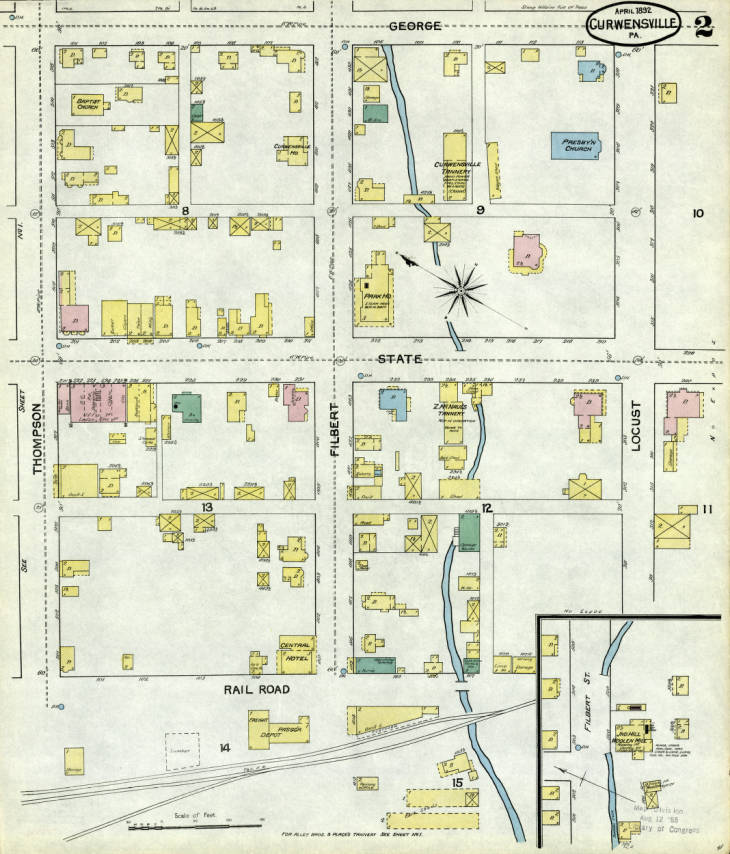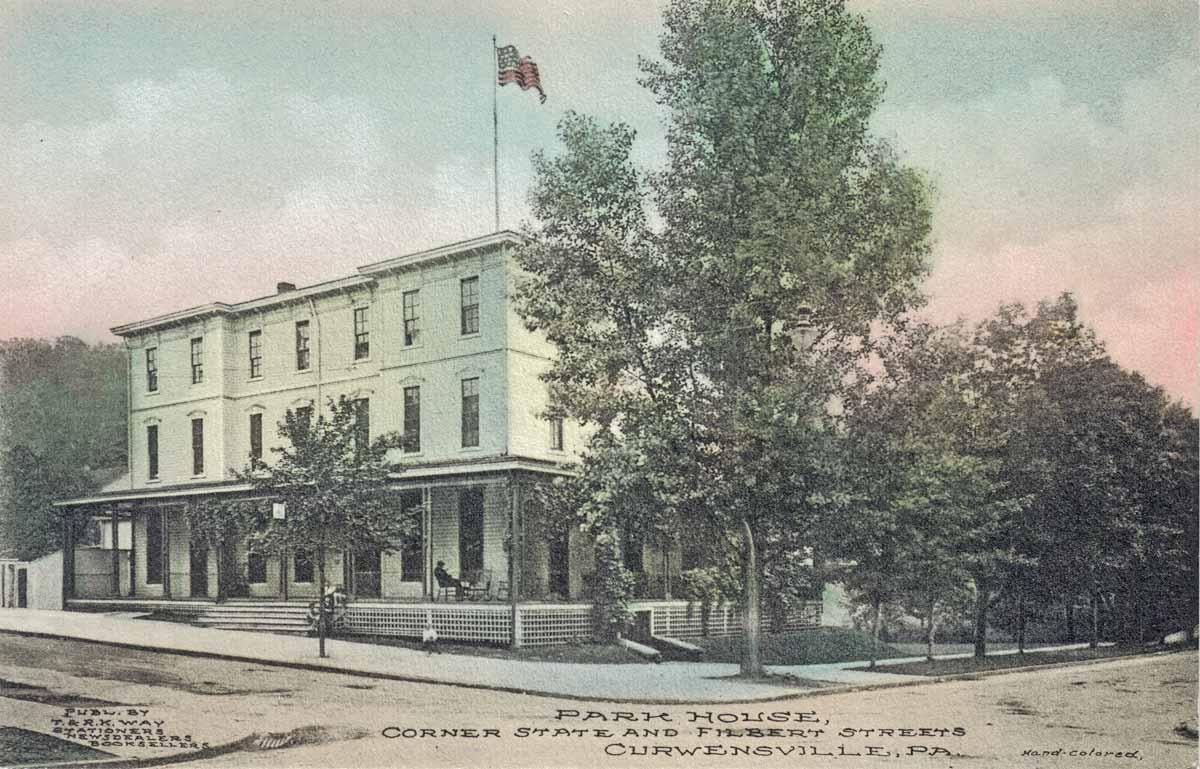.jpg)
.jpg)
TWENTIETH CENTURY HISTORY OF CLEARFIELD COUNTY PENNSYLVANIA AND REPRESENTATIVE CITIZENS by Roland D. Swoope, Jr. Chicago, Ill., Richmond-Arnold Publishing Company, 1911
CHAPTER XIV.
HISTORY OF CURWENSVILLE BOROUGH.
On December 10, 1798, John Curwen, Sr., of Montgomery county, Pa., obtained from the Commonwealth a patent for three hundred and fifty-one acres of land on the banks of the Susquehanna River, at the mouth of Anderson Creek, in what was at that time part of Lycoming county. On this property Curwen laid out a town, consisting of forty-eight lots, lying between what are now known as Thompson and Locust streets, which he named Curwensville. John Curwen, Sr., bequeathed this property to his son, George Curwen, from whom the greater portion of it was subsequently purchased by John and Wm. Irvin. Up to the year 1812, not a single building had been erected on the town plot, although from the best information now obtainable, it seems that there were at that time two dwellings on the Curwen lands. One of these was erected by Job England, near where the Patton homestead now stands, and the other by a Mr. Weld, near the dwelling no owned by the Misses Nannie and Alice Irvin. In 1813 Daniel Dale built the first house in the town proper, upon the lot corner of State and Filbert streets, where the Owens block is now located; James Moore, James Young, Mark Jordon and Josiah Evans, Esq., built the next dwellings in about the order named. During the year 1818 William Irvin, Sr., the father of Colonel E. A. Irvin and John Irvin, Sr., the father of Colonel John Irvin, came to Curwensville. John Irvin erected a saw-mill, and a grist-mill near the present site of the Irvin flouring-mill.
After the completion of the Erie turnpike, in 1824, the progress of the town was rapid, and by an act of the Legislature, approved the 3rd day of February, 1851, it was incorporated as a borough.
The limits of the borough have been enlarged several times, first by an act of the Legislature, approved the 21st day of March, 1856, and again by an act approved the 24th of April, 1869, and the third time, in 1884, on application of the inhabitants of the adjacent territory, the boundaries were extended by the court so as to include what was known as South Curwensville, and all property as far north as Hogback Run, and east as far as the eastern line of the Irvin farm, and west to near Roaring Run.
In 1871, through the efforts of the citizens, subscriptions amounting to over $60,000 were obtained, and the extension of the T. and C. Railroad to the town, was secured. The road was finished and opened for traffic in 1874.
The Clearfield & Mahoning Branch of the Buffalo, Rochester & Pittsburg Railroad, which passes through Curwensville, was open for traffic in 1893 and the Curwensville & Bower Railroad, a branch of the New York Central & Hudson River Railroad was constructed in 1903-4, so that the town is well supplied with railroad facilities.
Curwensville has seven churches, a weekly newspaper, a national bank, fine system of graded public schools, good water supply, paved streets and electric lights, and is one of the most thriving and progressive, as well as the most beautiful town in the county.
The principal industries are two large tanneries, the largest fire brick plant in the county, two stone quarries, besides other smaller industries.
The present population of the borough is about three thousand (3,000).

Curwensville Sanborn Map, 1892

Park House Hotel circa 1910